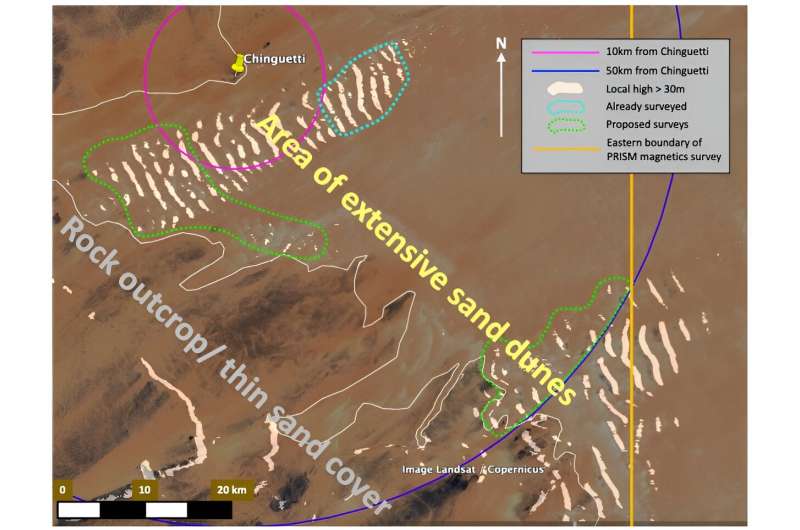March 1, 2024 report
This article has been reviewed according to Science X's editorial process and policies. Editors have highlighted the following attributes while ensuring the content's credibility:
fact-checked
preprint
trusted source
proofread
Physicists suggest a possible way to confirm or deny the existence of the Chinguetti meteorite

Three physicists have taken a new look at the circumstances surrounding the mysterious Chinguetti meteorite and developed a means for confirming whether it exists or not. In their paper posted to the arXiv preprint server, Robert Warren, Stephen Warren and Ekaterini Protopapa suggest that there are only a few possible places the meteorite could be and thus a magnetometer-based survey over the region could solve the mystery.
In 1916, Gaston Ripert, an official with the French consulate, reported to his colleagues that he had found what he described as an "iron hill" in a part of the Sahara desert, approximately 45 kilometers from Chinguetti, Mauritania, in northwest Africa. He brought back what he claimed was proof of its existence—a piece of stone he claimed to have chiseled off its surface. Scientists suggested the only possible explanation for such an object to exist in the desert was a meteorite strike.
Since that time, many scientists have studied Ripert's account and have scrutinized the area where he claimed to have seen the iron hill, but to date, no evidence has ever been found. In this new effort, the researchers took another look at the existing evidence and conducted research of their own to solve the mystery.
After studying the results of past work, the researchers suggest that there are good arguments both for and against its existence. They point out that in his description of the iron hill, Ripert observed what he described as metallic needles—it was not until 2003 that scientists discovered that such metallic needles sometimes occur in meteorites that contain abundant nickel. Also, it seemed possible that any crater produced by the impact would be covered in sand. They also note that it appears many prior searches were done in the wrong area.
The researchers state that if such a meteorite exists, it would have to be covered by a dune at least 40 meters high. Studying digital elevation models, they determined that there were two likely areas such a meteorite could exist in the region. And that, they conclude, means that a simple magnetometer-based survey of the two areas could solve the mystery.
More information: Robert Warren et al, New evidence on the lost giant Chinguetti meteorite, arXiv (2024). DOI: 10.48550/arxiv.2402.14150
Journal information: arXiv
© 2024 Science X Network





















